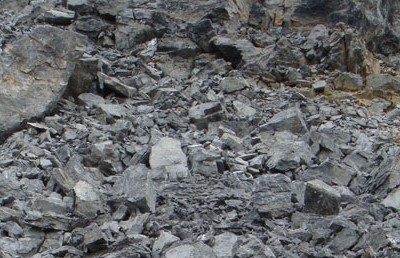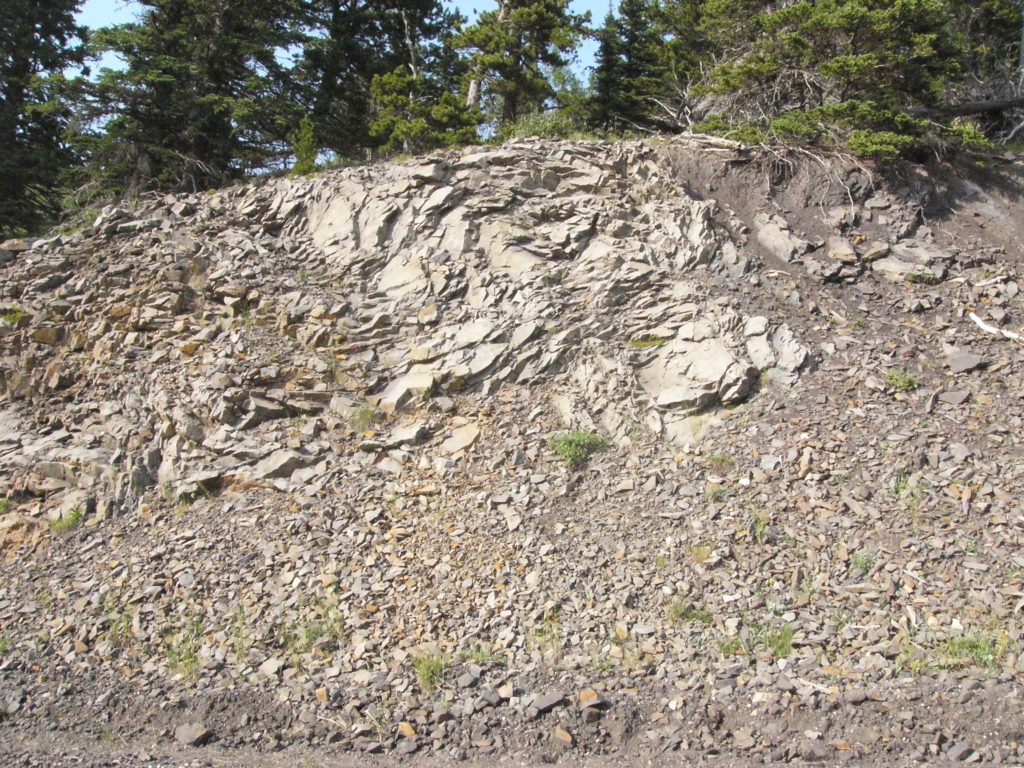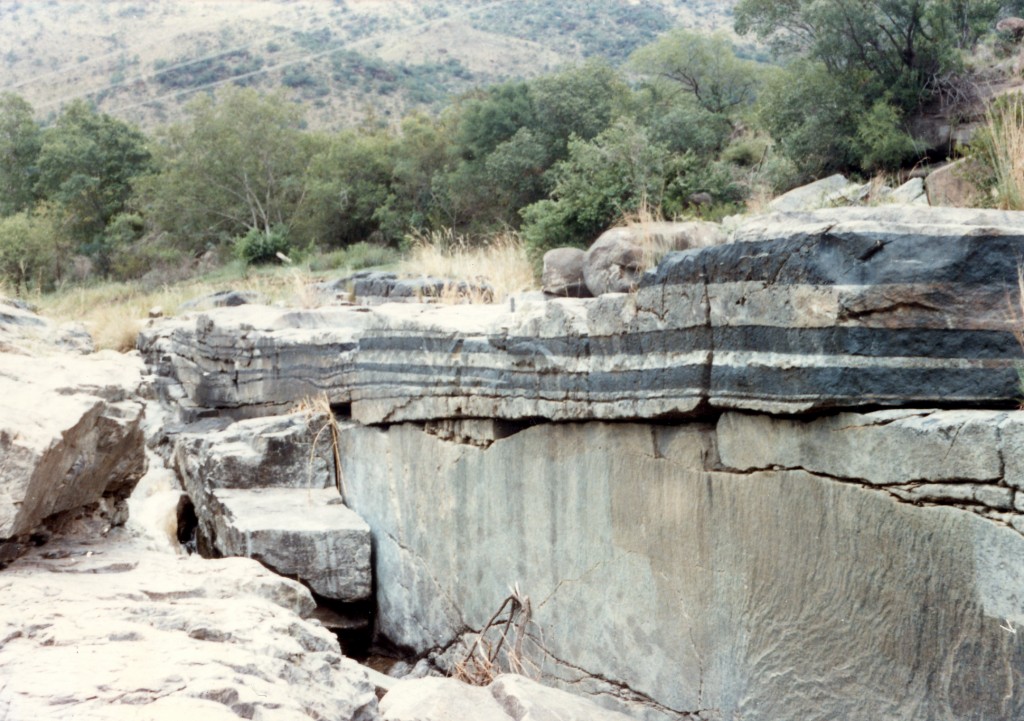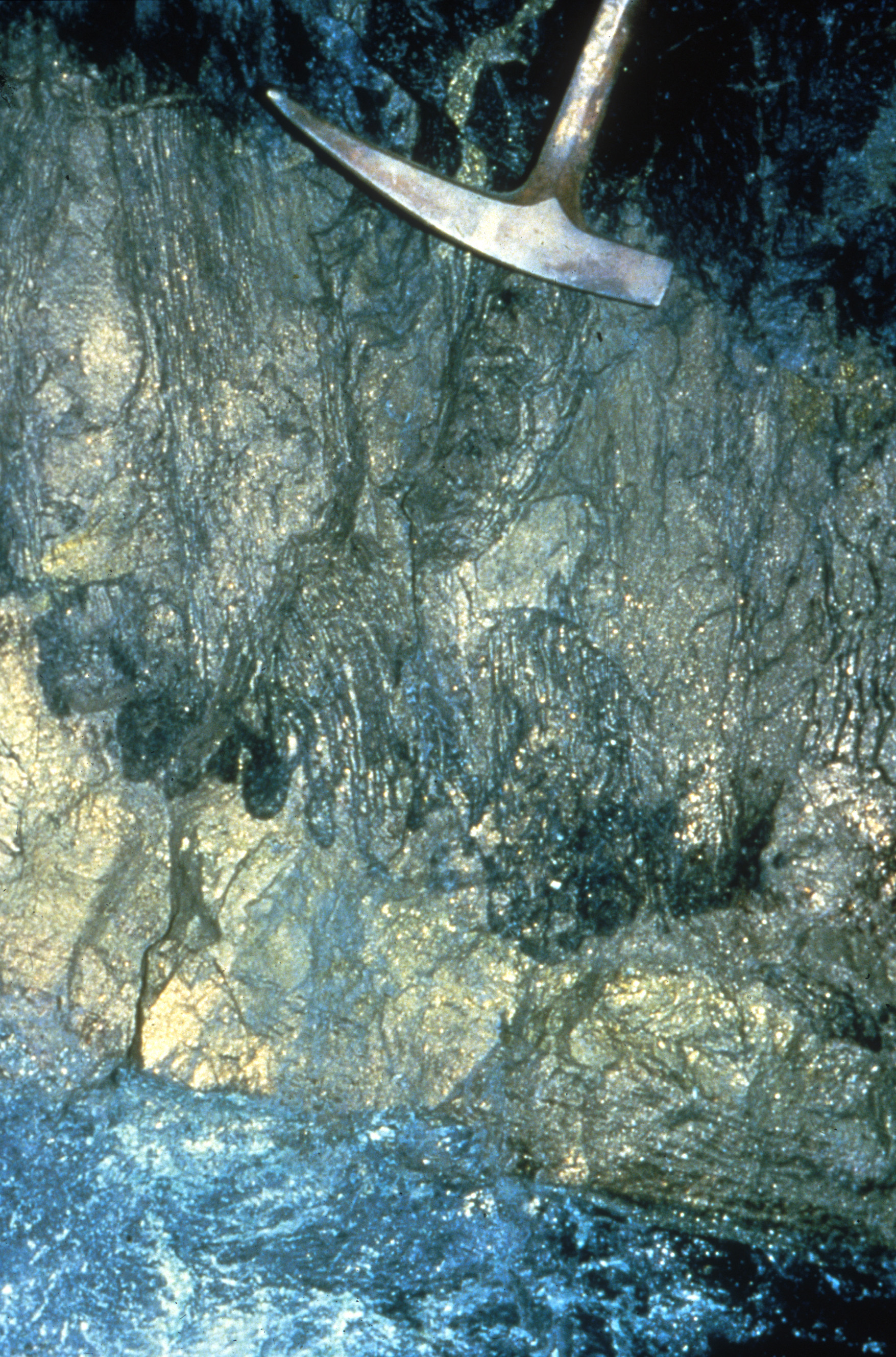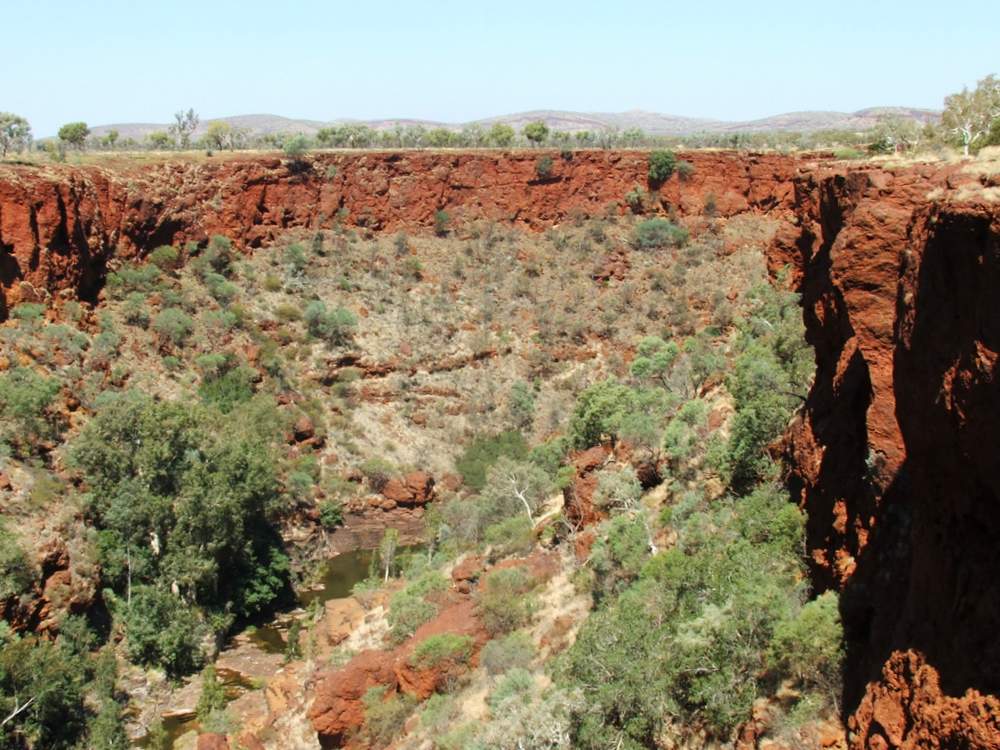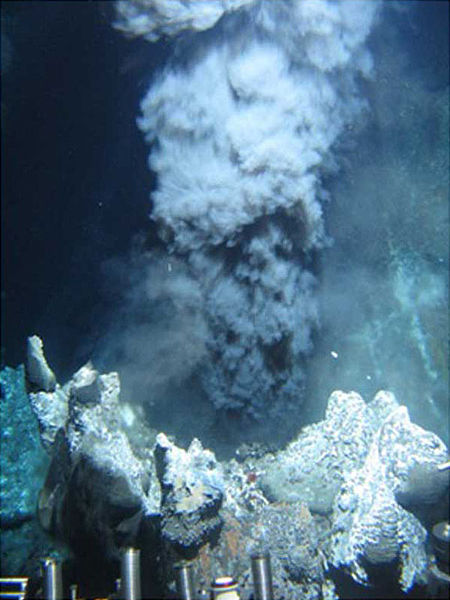Mineral deposits are often boiled down to two factors: tonnage, and grade. Grade is expressed as a percentage of a given element. Mines, however, don’t produce elements, they produce minerals. Mineralogy, the science of how these elements are bound into minerals, is an important but all too often overlooked factor in mining operations.
Mineralogy Basics
Minerals are the building blocks of rocks. They are defined as a naturally occurring solid substance with a definite chemical composition and crystal structure (a repeating pattern of bonded atoms). Diamond and graphite are both solid forms of carbon (C), but their crystal structures are completely different: graphite’s C is bound into loose sheets, making it soft and flaky, while diamond’s C is bound into a tight three-dimensional structure making it incredibly hard and resilient. Ice also meets the definition of a mineral: ordering a drink on the rocks is more than a figure of speech.
There are thousands of known minerals, with more being discovered every year. Only a few dozen of these are common in the Earth’s crust, and most rocks are made up of only a few of these. Minerals are classified based on the element or simple molecule which the rest of the mineral is built around. While there is still considerable variation within these mineral classes, they share broad similarities which makes understanding them helpful for understanding both the physical and chemical character of the rocks, and ore bodies, they form.
The list below is by no means comprehensive but provides a general overview of the mineral classes and common rock-forming and ore minerals. Note that many can accommodate variation in their chemical formula, with substitution of one element for another written as (X,Y).
Mineral Classes
Native Elements
Notable minerals: gold, silver, platinum, copper, graphite, diamond, sulfur.
Native (naturally pure) elements are the simplest, and rarest, class of minerals. They consist of an element bound only with itself. Most native elements are soft and dense (although diamond is hard and graphite is low-density), these physical properties, combined with chemical purity, makes native elements ideal ores. In the case of placer gold and diamond deposits all that is needed is swirling it around in a pan with some water, the high density of these minerals is enough to concentrate them in the bottom of the pan.
Halides
Notable minerals: halite NaCl (salt), sylvite KCl (potash), fluorite CaF2 (fluorspar/gangue).
Halides, AKA salts, are minerals where alkaline metals are bound to halides such as chlorine. Halides, with the exception of fluorite, are extremely soluble in water and will readily dissolve. Potash, in fact, is commonly mined by dissolving it in water, which is pumped back to the surface. Halides, except fluorite, are soft and low density, deeply buried salt deposits will deform and rise upwards, forming salt domes.
Sulfides
Notable minerals: chalcopyrite FeCuS2 (copper), bornite Cu5FeS4 (copper), galena PbS (lead), sphalerite ZnS (zinc), pentlandite (Fe,Ni)9S8 (nickel), molybdenite MoS2 (molybdenum), pyrite FeS2 (gangue), pyrrhotite (Fe1-xS) (typically gangue), arsenopyrite FeAsS (gangue).
[Editor’s Note: “Gangue” is the economically useless material within the ore body. See more about Mineral Processing.]
Sulfides, often lumped together with the closely related arsenides, are minerals where a metal is bound to sulfur and/or arsenic. Sulfides are dense, soft to moderately hard, have high metal contents, and possess relatively weak chemical bonds which breakdown readily when exposed to oxygen. These properties make them easily processed. Furthermore, many sulfides have a metallic luster (ie they’re very shiny) and are electrically conductive and magnetically susceptible. This means sulfide ores tend to be easy to spot with the naked eye as well as geophysical methods. Sulfides have been the mainstay of mining since ancient times. Sulfides do come with downsides, however. When the sulfur in these minerals reacts with oxygen in air it forms sulfuric acid, causing acid mine drainage, while the arsenic in minerals such as arsenopyrite can be highly toxic.
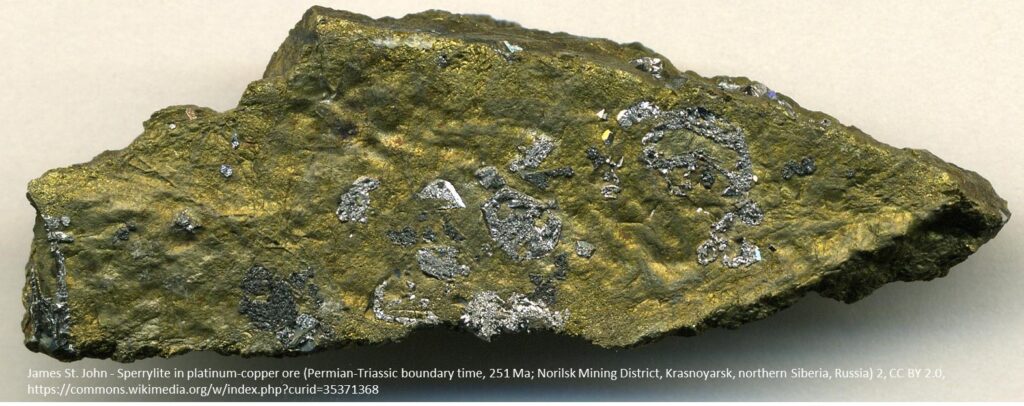
Oxides and hydroxides
Notable minerals: hematite Fe2O3 (iron), magnetite Fe3O4 (iron), goethite FeO(OH) (iron), uraninite UO2 (uranium), bauxite AlOOH/Al(OH)3 (aluminum), ilmentite FeTiO3 (titanium/gangue), rutile TiO2 (titanium), chromite FeCr2O4 (chromium), pyrolusite MnO2 (manganese).
Oxides are minerals where a metal is bound to oxygen, while hydroxides are bound to hydroxide groups. Oxides are relatively dense and moderately hard with high metal contents. They can also be strongly magnetic, and generally stand out in geophysical surveys. Oxide bonds are significantly harder to break than sulfide bonds, in fact many sulfides slowly breakdown into oxides when exposed to air, making oxides generally more energy-intensive to process. Aluminum ore is commonly shipped overseas to locations with inexpensive electricity to reduce processing costs.
Carbonates
Notable minerals: malachite Cu2CO3(OH)2 (copper), basnaesite (La,Ce,Y)CO3F (REEs), calcite CaCO3 (industrial uses/gangue/rock-forming), dolomite Ca(Fe,Mg)(CO3)2 (gangue/rock-forming).
Carbonates are built around a carbonate (CO3) group. These minerals are relatively soft and common; limestone, which is almost entirely calcite, has been a popular building material since ancient times. Carbonates are readily broken down by high heat and acids, making them easily processed. Buildings and sculptures made of limestone or marble will slowly dissolve away when exposed to rainwater, which is slightly acidic. Caves and sinkholes commonly form in regions where carbonate-rich bedrock is exposed to high rainfall, such as the Caribbean.
While carbonates are rarely ores themselves, they play a vital role in forming certain types of deposits such as MVT and skarn deposits. Many ore-forming fluids are acidic and when they encounter carbonates, which are alkaline, they react chemically, triggering mineral deposition.
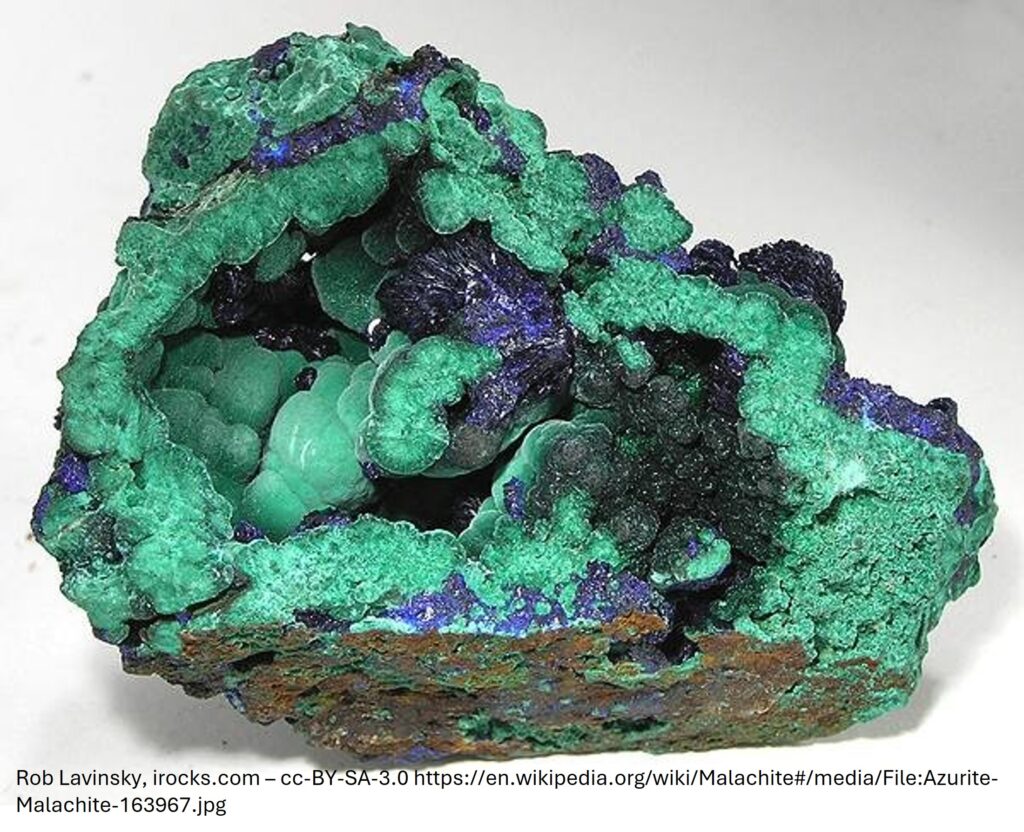
Malachite may have been the first ore ever worked by human hands. The theory goes that metal working was discovered when someone picked up a chunk of distinctive green malachite and either dropped it into a firepit or intentionally threw it in. A campfire could’ve been hot enough to break down this mineral, which would’ve turned the flames green and left a nugget of solidified copper in the ashes when the fire went out. This must’ve been a truly miraculous phenomenon for a resident of the late stone ages.
Other Oxysalts (phosphates, sulfates, tungstates, molybenates)
Notable minerals: apatite Ca5(PO4)3(OH,F,Cl) (phosphorus, REEs), monazite (Ce,La,Th)PO4 (REEs), xenotime (YPO4) (REEs), gypsum CaSO4·2H2O (industrial uses/gangue), barite BaSO4 (industrial uses/gangue), scheelite CaWO4 (tungsten).
Much like carbonates, which can be lumped in with the other oxysalts, oxysalts are built around a small, strongly charged molecule. They tend to have low to intermediate hardness, while other properties vary with chemistry.
Apatite is a particularly versatile mineral, not only is it common in many geological environments and capable of hosting potentially economic concentrations of REEs, but it makes every meal possible. The phosphorus extracted from apatite is essential for fertilizer, and the same mineral also forms the enamel in our teeth. There are three ways to make apatite, with fluorine, chlorine, or hydroxide. Fluorine apatite is the strongest and what our enamel should ideally be made of; chlorine, however, is added to drinking water to sterilize it, which will slowly convert our teeth to the weaker chlorine form over time. Fluorine is added to drinking water to counteract this.

Silicates
Notable minerals: quartz, SiO2 (industrial uses/gangue/rock-forming), spodumene LiAlSi2O6 (lithium), plagioclase (Na,Ca)Al1-2Si2-3O8 (industrial uses/gangue/rock-forming), K-feldspar KAlSi3O8 (industrial uses/gangue/rock-forming), muscovite KAl2(AlSi3O10)(OH)2 (gangue/rock-forming), illite K(Al,Fe,Mg)2(Si,Al)4O10(OH)2 (gangue), chlorite (Fe,Mg)5Al(AlSi3O10)(OH)8 (gangue), olivine (Fe,Mg)SiO4 (gangue/rock-forming), biotite K(Fe,Mg)3(AlSi3O10)(OH)2 (gangue/rock-forming), garnet (Fe,Mg,Ca,Mn)(Al,Fe)2(SiO4)3 (gangue/rock-forming), pyroxenes (complex and variable rock-forming minerals), amphiboles (complex and variable rock-forming minerals), and many others.
Silicates are built around silicon. They are by the most common, diverse, and complex type of mineral. Most common rocks are made up almost entirely of various silicate minerals. The physical properties of silicates vary enormously, but many are very hard, often harder than steel, and density tends to be moderate.
Silicates are the ore of last resort; silicon forms very strong bonds which are not easily broken, the metals contained within silicates are remarkably hard to extract. When silicates are mined for ore they are either used in their intact mineral form, or require extensive and costly processing typically involving very strong acids and high heat. This is generally only worthwhile if there are no other ores available. To make matters worse, the complexity of silicates means the element of interest is not strongly concentrated. Spodumene, for example, is only about 8% lithium, whereas magnetite is nearly 70% iron.
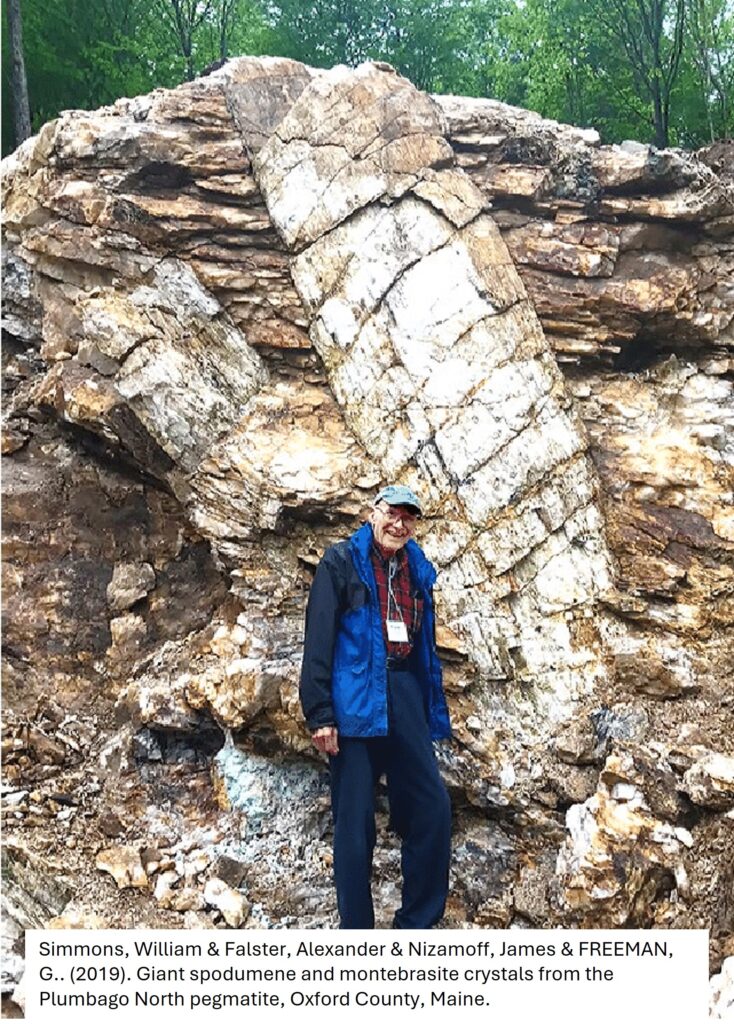
Mineralogy, Mining, and Mineral Processing
Most base and precious metals are extracted from native elements, sulfides, and oxides as the physical and chemical properties of these classes generally allow them to be cost effectively broken down into their constituent elements. They are also easily spotted, both by geophysics and the human eye, and contain high concentrations of target element.
Some metals such as lithium and REEs do not occur in a pure state or form simple oxides or sulfides. Processing these elements is complicated, energy-intensive, and expensive, and is often more challenging than mining them. In the case of REEs most production is from carbonates or phosphates, which present significant, but generally manageable, challenges. While high grade deposits of REE silicate minerals exist, they are generally not economically viable due to the difficulty of processing these complex and refractory ores.
Most lithium ores are in the form of silicates, mainly spodumene. Not only does liberating lithium from spodumene require intensive chemical processing, but its physical properties make matters even worse. Spodumene, together with the silicate gangue minerals found with it, is so hard that the mill machinery used to grind and concentrate the ores requires intensive maintenance because even the toughest alloys quickly wear out.
Perhaps the best example of the importance of mineralogy is nickel. Nickel is mined from two main sources: sulfides in magmatic deposits, and oxides in laterite deposits. While laterite deposits tend to be very large and very near surface, making mining itself easy, these laterites have only been exploited for a few decades due to the technically sophisticated and energy intensive nature of the required processing. Magmatic sulfide deposits have been mined for well over a hundred years. While they are relatively rare, their high grades and easy processing makes them among the most potentially profitable deposits. These deposits, however, must also take the tenor (the proportion of nickel in sulfides) into account because nickel is also found in silicates such as olivine in these deposits. This silicate nickel technically increases the grade of the deposit but is effectively impossible to economically recover. It is therefore deliberately excluded from resource estimates because it doesn’t add value.
Investor Takeaways
Mineralogy is an important but frequently overlooked aspect of mining. Native elements, sulfides, and oxides typically make for viable ores, but recovering metal from silicate minerals poses significant challenges, which can render an otherwise attractive deposit uneconomic. The complex and resilient nature of the mineralogy of many lithium and REE deposits makes milling and processing of these ores complex and expensive. Projects that don’t adequately take these factors into account are unlikely to succeed.

